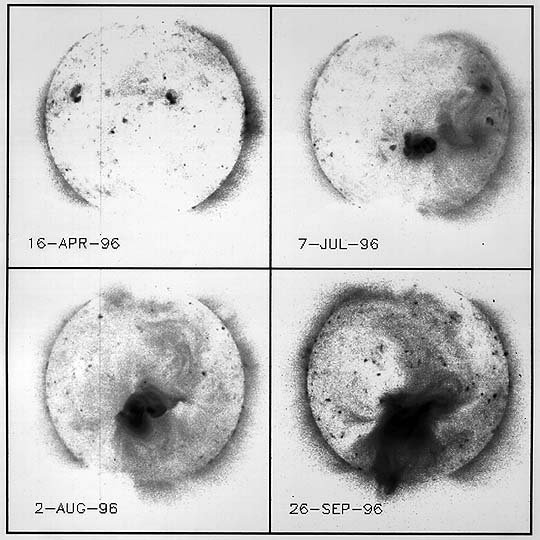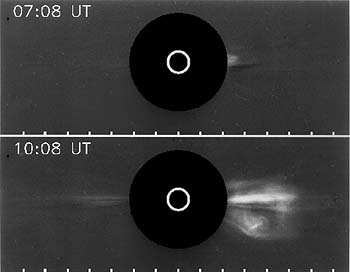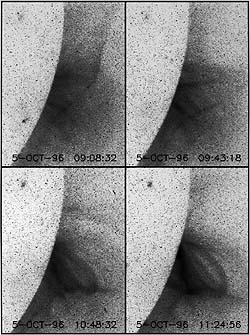Yohkoh and the Physical Origins of "Space Weather"
Hugh S. Hudson
The solar wind comes from the hot corona of the Sun and continually blows past the Earth. This "wind" (a flow in a collisionless plasma, not in an ordinary gas!) contains irregular structures, some of them big enough and energetic enough to cause strong perturbations of the Earth's own plasma environment, or even to create spectacular effects at the here on the surface of the Earth such as the aurora borealis and strong Earth currents.
This article describes briefly how we are using data from Yohkoh to understand the solar origin of these solar-wind structures. This is important for several reasons - for the sake of the physics itself; for the practical purpose of understanding better how to predict terrestrial effects; and as a generalization of the solar example to the stars and possibly beyond. The human side of these phenomena is now commonly termed "space weather".
Yohkoh was launched five years ago and we've just had an international conference to celebrate that fact. But the data continue to amaze us, and in 1996 Yohkoh has made some remarkable observations. Figure 1 shows a solar active region, with large sunspots, that appeared unexpectedly at the bottom of the sunspot cycle as recently as last July. It produced (or participated in) the events discussed below.

Figure 1. Four Yohkoh images of the Sun from different rotations, each centered on the longitude of the huge active complex and sunspot group of 1996. The upper right shows its birth, and the lower right shows its configuration after the coronal mass ejection of September 25. This and the other illustrations here have reversed colors for clarity.


